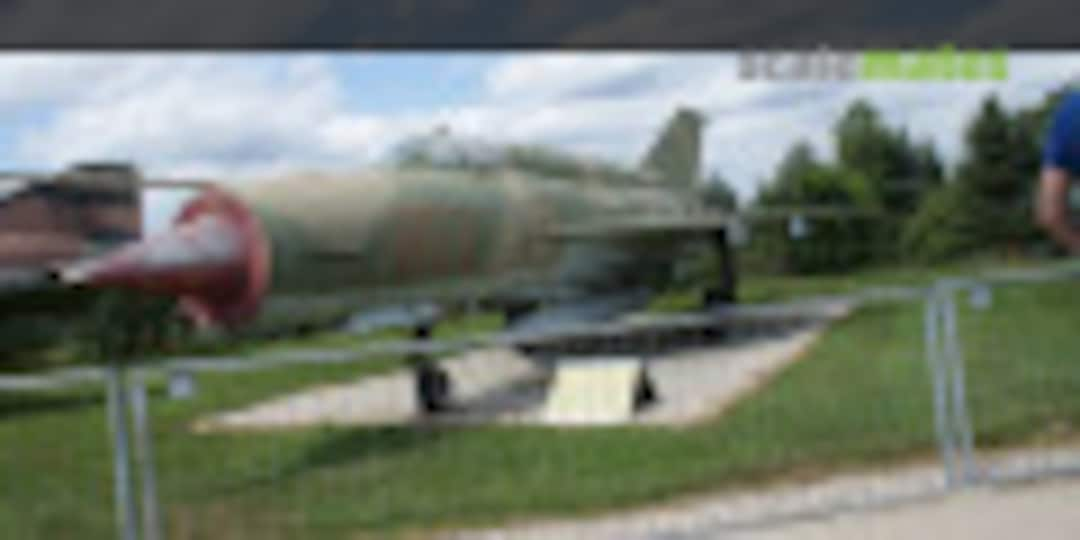MiG-21PFM - Egypt - 1973








I decided to apply no stencils since I am not convinced at all that the Egyptian MiG-21s received any after the local painting.
Maybe only the weapons pylons will receive stencils, since I doubt they were repainted.

No post-shading for the underside yet but will follow.











I guess some smoke marks at the gun muzzle woud have been more realistic. I guess I noticed just now that I forgot to apply any of that, but in the end the gun pods were't used that extensively and were not built-in features.

The resin wheels are here a big win in my opinion, you really see a positive difference.


Comentarios
Wow, I applaud your modelling stamina - losing almost the entire finished model and starting over again. That's pure determination!
Beautiful result and kudos for persevering with another kit! Well done mate!
Thank you guys!
Yeah, losing the first model was a big dissapointment, but I really wanted to have an EAF PFM in stripes. In total there are over 25 models in my plan for the Arab-Israeli air wars.
Album info
Nearly half of the Egyptian interceptor fleet was represented by PFM versions as of October 1973 (Ramadan War). My subject is a particular MiG-21PFM number 8312 that was delivered to Egypt in the early 1970. The number 8312 is clearly a survivor of the Yom Kippur/Ramadan War of October 1973.
The MiG-21F-13 had proven its qualities during the War of Attrition with its powerful 30mm cannon and outstanding maneuverability. The newer and more advanced MiG-21PFM would bring among other things a new engine, a better radar and improved avionics, but had no incorporated cannon any longer while the total number of equipment pylons remained unchanged (three). Since the accuracy of the standard R-3S missiles was later proven to be catastrophic during air battle, the lack of a built-in cannon had often fatal consequences for many PFM pilots.
Later development of the MiG-21PFM allowed for equiping a GSh-23 cannon and 200 rounds in an underbelly pod, but which obviously negatively influenced the maneuverability. Since MiG-21s suffered terribly from constant lack of fuel, external fuel tanks were always necessary and PFMs always carried one under the fuselage. With the gun pod mounted, not only that the rear airbrake could no longer be deployed, but the very precious third pylon (fuselage) for the external fuel tank could no longer be equipped. That meant that PFMs with gunpods could only be deployed with two R-3S on the two wing pylons for flights close to the airbase (e.g. for defending the airbase in case of an imminent attack), or can be sent to longer flights with two external tanks under the wings but without any missiles. Overall, the gun pods were indeed used by the EAF even during the Ramadan War, but rarely.
Regarding the paint scheme, except some late deliveries of MiG-21MFs in 1973, the vast majority of Egyptian MiG-21s (all versions) have already had locally applied camouflage at one of the Helwan factories by the time the Yom Kippur/Ramadan War (October 1973) started. Aside from the famous "Nile Camouflage" applied at Helwan (see my other Egyptian MiG-21MF: MiG-21MF - Egypt - Nile Camouflage - 1973 | Album by Redicus (1:72)), there were also different variations of a specific camouflage scheme with thin olive-green or dark-earth stripes applied over the sand backgorund color (similar to my chosen subject).
On a side note, although the interior/cockpit of PFMs was delivered as grey, most operators repainted their cockpits during overhauls back in the later standard turqoise. For instance, the Vietnamese have done this to their early MiG-21 versions only after the Vietnam War, while I believe that some Egyptian MiG-21s have had repainted cockpits already before the Ramadan War due to intensive preparations for the incoming war. For my model, I chose to represent an earlier look with the grey cockpit as probably seen at some point just before the Ramadan War (1973)
The Ramadan War brought extensive losses to the EAF, but unlike Syria, Egypt received absolutely no resupplies from the USSR neither during nor after the war. Considering the already cold ties with the USSR and the positive outcome of the Camp-David peace treaty with Israel in 1979, Egypt started looking more towards western goverments which created a signifficant rupture in the Arab world. Since Egypt had no intention in keeping its soviet-made aircraft fleet in service more than needed, the many of the Egyptian MiG-21s (especially the eariler versions) were barely overhauled anymore or repainted after the mid 70's and some maintained their wartime camouflage until final withdrawal from service in the early or mid 1980s.
The historical pictures included here in this album of the MiG-21 PFM number 8312 were taken in 1982 during the Bright Star military exercise performed together with the US Air Force. Due to the reasons above, I believe that this was still the initial camouflage worn since the Ramadan War. Patina and fatigue are visible on the aircraft even in the lower quality photographs, although not as signifficant as seen at the MiG-21s in the Nile camouflage.
Group Build

15. Marzo hasta 31. Diciembre 2021




